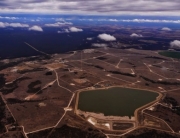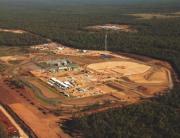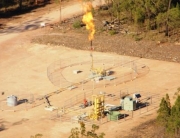The concern about royalties
This letter to the editor by BSA Committee Member Lee McNicholl summaries the views of BSA on government royalties.
“Estimates by the previous Labor and current Qld LNP Governments that the CSG industry would deliver a royalty bonanza of $800M p.a. plus thousands of permanent jobs and boom-time economic prosperity across the Surat and Bowen Basins are being exposed as wildly inaccurate and irresponsible.
An excellent article in The Australian {Jan 9th} titled “Oil price plunge threat to Qld budget” pointed out that petroleum and gas royalties contributed a paltry $69M in 2013-14 but were estimated to rise to $638M in 2017-18. Alarmingly, in the latest mid year revision, expected revenues for 2014-15 were slashed from $199M to $71M, even though gas exports from Gladstone have begun. Coal royalties for 2017-18 have also been slashed by $1.15 Billion creating a serious budget black hole. So why have revenue projections tanked?
Liquefied CSG {LNG}delivered Asia is traditionally priced through relating it’s energy value to a mixture of oils called the Japanese Crude Cocktail{JCC}. Plunging world oil prices has dropped the JCC benchmark 40-50%. In sympathy, the spot market for delivered LNG has dropped from $16/Gigajoule to $9.60 for January 2015 delivery, consequently forcing down longer term contract prices.
Queenslanders also need to know about the Petroleum and Gas royalty calculation method which can actually deliver highly variable revenues, because the royalty is based upon 10% of the Well Head Value{WHV} . WHV is derived by subtracting from the FOB Gladstone price all the CSG company’s costs of getting CSG from the wellhead to Gladstone plus liquefaction and loading costs.
Let’s say the FOB price was $10Gigajoule and costs were $8, then the WHV is $2/Gigajoule and so the royalty at 10% is 20c/Gj. For reference 1Gigajoule equates to 18Kg of LNG. I believe the current royalty on domestically used gas is approx. 20c/Gigajoule. The revenue from export gas is clearly highly unpredictable. However it is certain that domestic gas prices could double from $4/Gj if “export parity” is $8-$10/Gj.
Under a worse case scenario, Queenslanders could end up with minimal royalties but much higher gas and electricity costs, negatively impacting our industries. FIFO mine workers will continue to contribute nothing to rural Queensland communities and business. Queensland farmers will be forced to “co-exist” with multi-national CSG companies that will degrade their landscapes, their production and compromise underground water supplies from the Great Artesian Basin. Both major parties need to “fess-up”, muzzle their spin doctors and stop supporting unsustainable extractive industries at the expense of agriculture and other sustainable industries like renewable energy.”
Lee McNicholl



